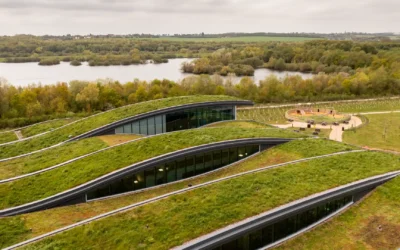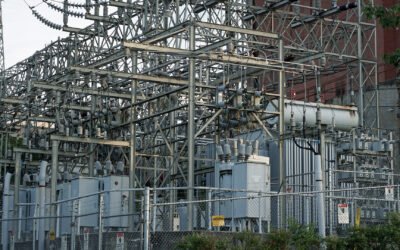• FACTS devices tend to have wide range of applications in the grid including voltage stability, renewable integration support and dynamic power compensation (increases active power transmission capacity).
• Modern FACTS devices include static var condensers, static synchronous compensator, series compensation and synchronous condenser.
• Series compensation technology still has a huge market and its continued presence in the market indicates how important the technology is for the utilities and TSOs (transmission system operators).
FACTS are modern power electronic devices that have the capacity to provide inductive or capacitive reactive power to the electricity grid in turn improving the reliability and power quality of the power grid network. These devices tend to have wide range of applications in the grid including voltage stability, renewable integration support and dynamic power compensation (increases active power transmission capacity). In recent times we have observed significant progress in the FACTS technology which was directly a product of advancements in the power electronics.
Modern FACTS devices include static var condensers, static synchronous compensator, series compensation and synchronous condenser. The article intends to discuss the market outlook of SVC, STATCOM and Series compensation devices from 2017-2021 and will exclude synchronous condensers from the discussion as the market activity around this technology was relatively insignificant during the aforementioned time frame.
Technology Tilt in Global FACTS Market

Figure 1: Global FACTS Technology Preference.
Source: Power Technology Research
In the last five years more than 110,000 MVAr capacity of FACTS was deployed all over the world. From 2017-2021, majority of the FACTS deployments in the world were STATCOM accounting for more 50,000 MVAr of capacity additions. STATCOM led the global FACTS market due to fast dynamic power response as compared to the other technologies. STATCOM was followed by series compensation technology which found its application in the power transmission sector as it has the capacity to increase the power transmission capacity by 10-20% while cutting the cost for transmission expansion. SVC was ranked third in terms of deployment from 2017-2021 and the technology was mostly installed by utilities and industrial sector where space is not a constraint.
Technology Tilt in Key FACTS Markets

Figure 2: Standings of Regional Markets in Terms of New Capacity Additions in MVAr.
Source: Power Technology Research
FACTS technology is being deployed globally as it provides the capability to provide reactive power support to the grid while maintaining voltage stability that essentially enables the grid to integrate more renewables. As far as the standings of regional markets in terms of capacity additions in MVAr are concerned, Americas is leading the global FACTS market with capacity additions accounting for 40% of the global capacity additions from 2017-2021. The FACTS market of the Americas was largely driven by series compensation technology with majority of the projects being deployed in the South American countries like Brazil and Chile as well as certain North American countries like Canada and Mexico. APAC FACTS market is mainly driven by the STATCOM deployments accounting for more than 60% of the total FACTS installed in 2017-2021 followed by series compensation and SVC accounting for 25% and 13% respectively. EMEA FACTS market was driven by STATCOM that accounted for around 74% of the total FACT deployments in the region, followed by series compensation and SVC that accounted for 13% each. In the Americas recently Siemens has installed two series compensation units in Brazil and Chile to support the power transmission capability of the existing network. In 2021, STATCOM capacity of beyond 2,000 MVAr was commissioned in the countries like Canada, Chile and Brazil.
In the APAC, ABB has recently deployed a series compensation unit in South Korea to maintain the grid stability. GE has also installed a SVC unit at Kurukshetra substation in India to support the power grid operations in the country. Similarly, in EMEA, TBEA deployed a STATCOM unit in Saudi Arabia to support the integration of grid Sakaka 300 MW Solar Project, Al Jouf in 2020. Siemens on the other hand installed a SVC unit for 50 Hertz Transmission GmbH at a steel mill in Germany in order to maintain the power quality.
Looking Ahead
Despite COVID, FACTS market has depicted a positive trend at the global level with few setbacks in the North America especially in the U.S. As far as the technologies are concerned, STATCOM has observed significant growth all over the world for several applications ranging from renewables to utilities. Power Technology Research further observed that series compensation technology still has a huge market and its continued presence in the market indicates how important the technology is for the utilities and TSOs (transmission system operators). Additionally, as the renewable energy is deployed in the Americas in the coming years the FACTS market will observe substantial growth.
Flexible AC Transmission Service Overview
The research presented in this article is from PTR's Flexible AC Transmission service. For information about this service please submit a request shown below.
Contact Sales:
Europe
+49-89-12250950
Americas
+1 408-604-0522
Japan
+81-80-7808-1378
GCC/Rest of APAC
+971-58-1602441
More about our:
Flexible AC Transmission Systems Market Research
Recent Insights
Sustainability Across Sectors: Highlights from GreenTech Festival 2024
Recently, I had the privilege to attend and present at the Greentech Festival, an excellent event in the realm of sustainability. This influential...
US and EU Strategies in Smart Buildings
Download Service Overview The EU and USA aim to decarbonize their building sectors to meet emission reduction targets. Initiatives like the Home...
Renewable Revolution Catalyst for the EU’s FACTS Market Growth
The Russia-Ukraine war has served as a wake-up call for the EU member states to decrease their dependence on Russian energy supplies. Due to the...


